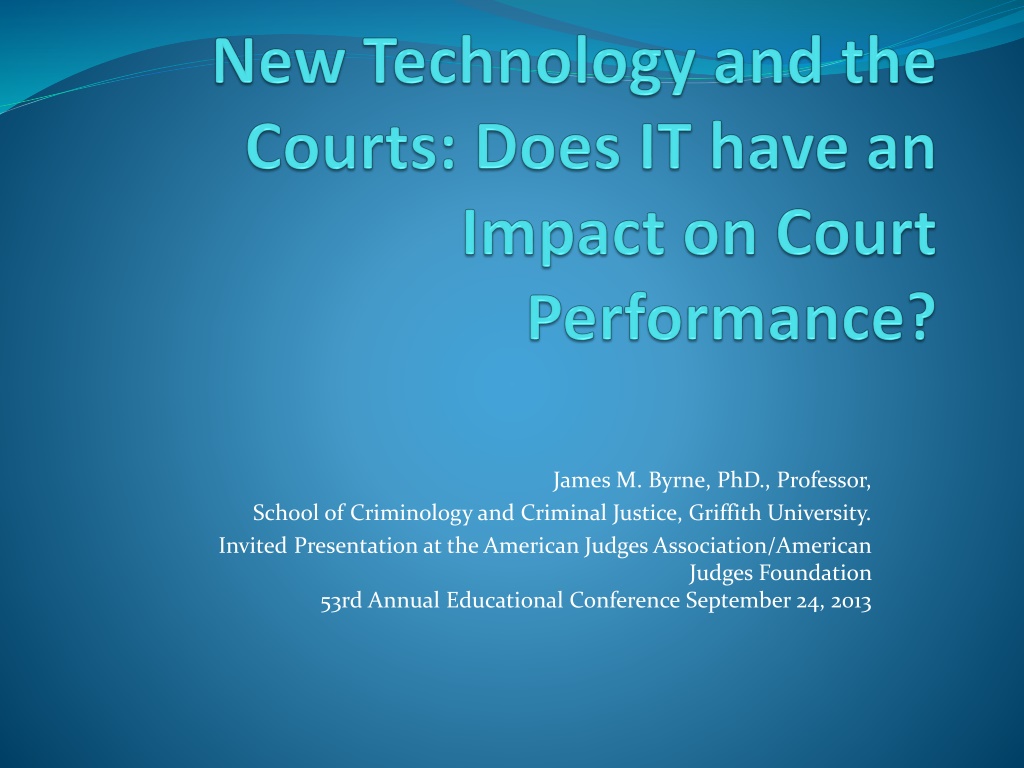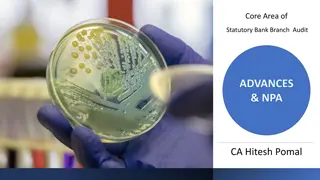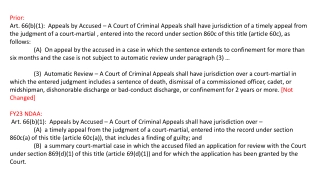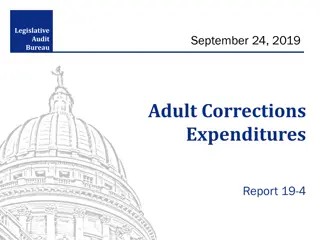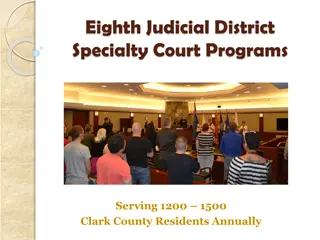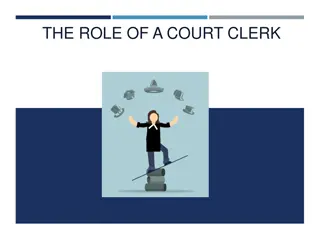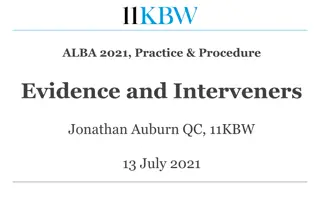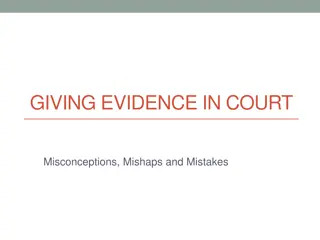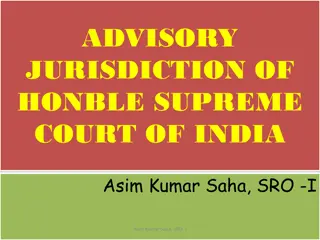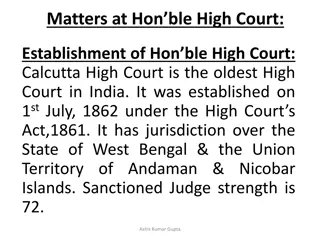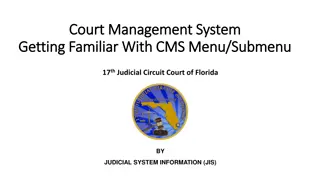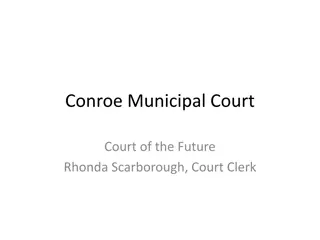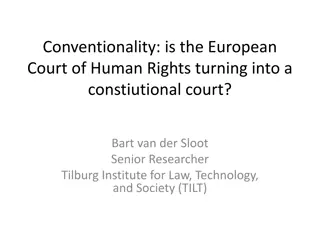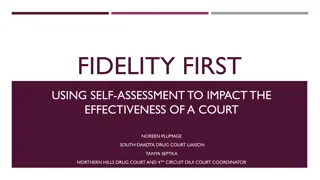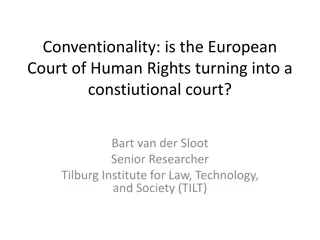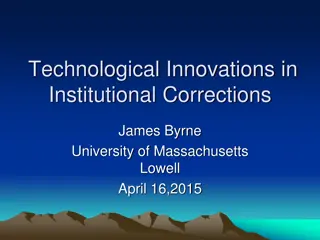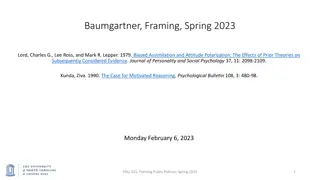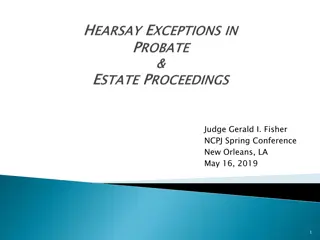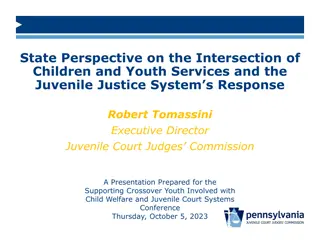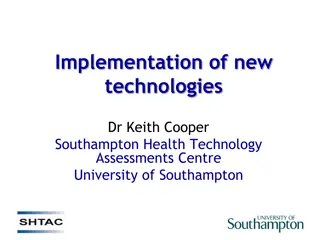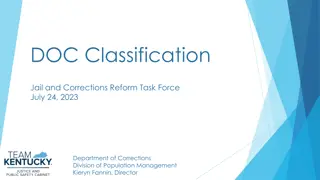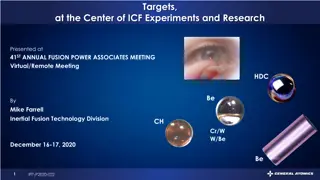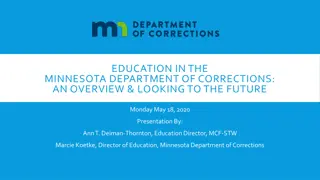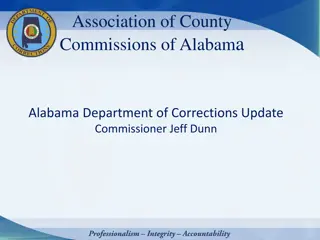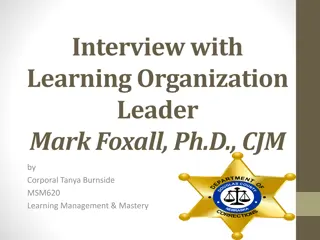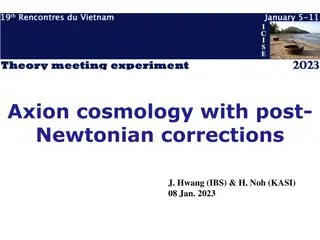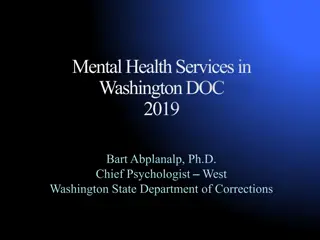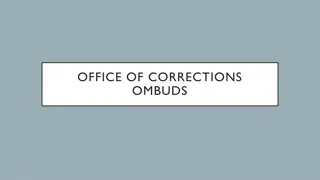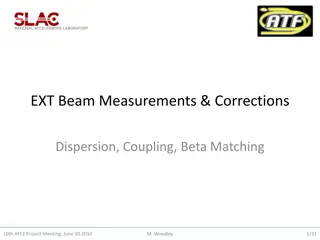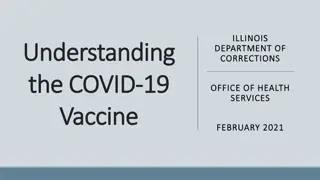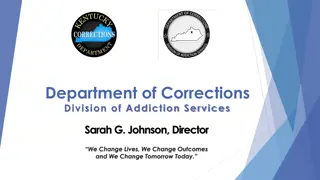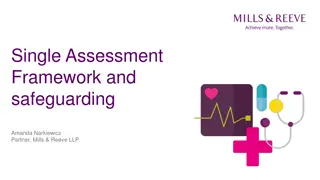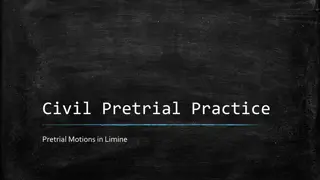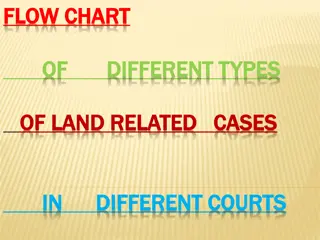Advances in Court Technology: Enhancing Evidence-Based Corrections
Explore the impact of new technology on crime, law, and social control, focusing on innovative court technology advancements in crime prevention, policing, courts, corrections, and community safety. Delve into the Global Centre for Evidence-based Corrections and Sentencing's initiatives, including high-quality research agendas, knowledge exchange seminars, and global networking for evidence-based practices. Discover the integration of hard and soft technologies for crime prevention, from CCTV and street lighting to threat assessment and offender registration systems.
Download Presentation

Please find below an Image/Link to download the presentation.
The content on the website is provided AS IS for your information and personal use only. It may not be sold, licensed, or shared on other websites without obtaining consent from the author. Download presentation by click this link. If you encounter any issues during the download, it is possible that the publisher has removed the file from their server.
E N D
Presentation Transcript
James M. Byrne, PhD., Professor, School of Criminology and Criminal Justice, Griffith University. Invited Presentation at the American Judges Association/American Judges Foundation 53rd Annual Educational Conference September 24, 2013
An Overview of Presentation A quick overview of the new Global Centre for Evidence-based Corrections and Sentencing www.gcecs@edu.au TECHNOLOGY AND THE CRIMINAL JUSTICE SYSTEM Innovations in Court Technology : An Overview How do we assess court performance? An Introduction to Systematic Evidence-based Reviews: Gold Standard, Bronze Standard, and Non-scientific( or nonsense) reviews A Review of the Available Research Court Technology Implementation Issues Court Technology Impact Issues
(1) High Quality Corrections and Sentencing Research Agenda- the Centre will develop research projects focusing on evaluating the impact of current corrections and sentencing strategies( adult/juvenile) in Queensland, throughout Australia, and internationally. (2) Knowledge Exchange Seminars and Systematic, Evidence -based Policy Reviews - To translate research into practice, the Centre will develop a series of executive session seminars and workshops highlighting corrections and sentencing issues in each global region. (3) Global Evidence-based Corrections and Sentencing Network Development: The Centre through the Centre s state of the art website-- will become a global clearinghouse for high quality, evidence-based corrections research, and a primary source of information on global corrections performance, and innovative corrections and sentencing policies and practices. WEBPAGE: WWW.GCECS.EDU.AU
New Technology of Crime, Law and Social Control Technology has had an impact on both crime commission and crime control. To better understand advances in court technology, we will begin with a brief overview of technology innovations in the following areas: Crime prevention Policing Courts Institutional Corrections Community Corrections New Technology of crime
The New Technology of Crime Prevention Hard Technology Soft Technology CCTV Street Lighting Citizen Protection Devices (e.g. mace, tasers) Metal Detectors Ignition Interlock Systems (drunk drivers) Threat Assessment Instruments Bullying ID Protocol Sex Offender Registration Risk Assessment prior to involuntary civil commitment Profiling Software to identify suspicious persons
The New Technology of Policing Hard Technology Soft Technology Crime mapping (hot spots) Crime analysis (e.g. COMPSTAT) Criminal history data systems enhancement Info sharing within CJS and private sector CCTV police applications Improved police protection (vests, cars) Improved/new weapons Less than lethal force Computers in squad cars Hands free patrol car control (Project 54) Offender and citizen ID s via biometrics/fingerprints Gunshot location devices
The New Technology of Law and Courts Hard Technology Soft Technology Case flow management systems Radio frequency identification technology Data warehousing Automation of court records Sentencing Support tools Problem-oriented courts with unique information system requirements( drug, reentry, gun, domestic violence, and community courts) The high tech courtroom (computers, video, cameras, design features of buildings) Weapon detection devices Video conferencing Electronic court documents Drug testing at pretrial stage
The New Technology of Institutional Corrections Hard Technology Soft Technology Contraband detection devices Duress alarm systems Language translation devices Remote monitoring Perimeter screening Less than lethal force in prison Prison design options/ expansion of super-max prisons Expanded use of segregation units Use of simulations as training tools (mock riots) Facial Recognition software New inmate classification systems (external/internal) Within prison crime analysis ( predicting hot spots; high rate offenders; and prison violence) Info sharing with police, community, victims, and community-based corrections (reentry)
The New Technology of Community Corrections Hard Technology Soft Technology New classification devices for sex, drugs, and MI offenders New workload software/ and Treatment Technology Info sharing with community, police, treatment providers GPS, language translators Breathalyzers, instant drug tests Polygraph tests Laptops for line staff GPS for staff location
The New Technology of Crime: New Offenders, New Crimes The Impact of Technology on Criminality New Offenders 3 Distinct Opportunity Structures first identified by Richard Sparks in 1980 can be applied to internet- facilitated crimes: Crime at work Crime as work Crime after work
The New Technology of Crime AT Work : Some Examples Embezzlement Money Laundering/Financial Frauds Credit Card Fraud by Employees Corporate Espionage (via bots, email monitoring, pretexting) Theft/Sale of Private, Confidential, Personal Data The Spreading of Viruses & Malicious Codes (to gain competitive advantage)
The New Technology of Crime AS Work: Some Examples Internet Fraud Schemes: Nigerian letter, online auctions, drug/health frauds, lottery frauds, revictimization frauds Telemarketing Fraud Schemes: Investments, promotions, sales Identity Theft Credit Card/Check Fraud Phishing (for Profit) Internet Sex Crimes Sale of Private, Confidential, Personal Data Internet Piracy Silk Road: hidden identity/ anonymous online shopping Theft of Computers, Computer Software, Internet Access
The New Technology of Crime AFTER Work : Some Examples Internet Sex Crimes (Sex tourism, child pornography, child predators/solicitation) Internet Hate Crimes Internet Stalking Cyber-Terrorism Spreading Viruses and Malicious Codes Hacking/Illegal Access to Data Sexting
Will new technology applications in criminal justice result in the replacement of people with things ? 1. Will technological advancements in the area of offender control minimize the possibilities for individual & community change? 2. 3. What are the long term consequences of privatization of key technology related CJ system functions?
The New Technology of Criminal Justice vs. Unintended Consequences : Intended Intended Unintended Less crime Less Freedom, Crime Prevention Police .. Less crime More Distrust Courts .. Institutional Corrections More efficiency More Disparity More Control Less Change Community Corrections More Control Less Change
Evaluation Research and Court Technology Systematic Evidence-based Reviews of the available research come in three forms: Gold Standard Reviews: Focus on the results of randomized control trials( RCTs) Bronze Standard Reviews: Campbell Collaborative Reviews focus on all research studies of level 3 quality and above on a 5 point scale( 1=nonexperimental designs- 5=well designed RCTs) NIJ s new Crime Solutions. Gov webpage : only 1 level 3 study needed Nonsystematic or nonsense reviews: no minimum review criteria or systematic study identification
Systematic Evidence-based Reviews and the Courts No Systematic, Evidence-based Reviews of the research on court technology s impact available for review Why? There is not enough high quality research being conducted on the impact of technology on court performance Court Performance measures are a first step toward achieving three important court outcomes: transparancy, efficiency, and effectiveness. A Small Number of Systematic Reviews of Sentencing Available for Review: What do these studies reveal?
Table 2: Campbell Collaboration Systematic Reviews of Adult Corrections and Sentencing by Country Study USA 10 Canada 0 UK 0 Aust 0 Other 0 Total number 10 Feder, L., Austin, S., & Wilson, D. (2008). Court-Mandated Interventions for Individuals Convicted of Domestic Violence. Campbell Systematic Reviews of Intervention and Policy Evaluations. Lipsey, M., Landenberger, N.A., & Wilson, S.J. (2007). Effects of Cognitive-Behavioral Programs for Criminal Offenders: A Systematic Review. Campbell Systematic Reviews of Intervention and Policy Evaluations. McDougall, C., Cohen, M., Swaray, R., & Perry, A. (2008). Benefit-Cost Analyses of Sentencing. Campbell Systematic Reviews of Intervention and Policy Evaluations. Mitchell, O., Wilson, D.B., & MacKenzie, D.L. (2012). The effectiveness of incarceration-based drug treatment on criminal behavior: A Systematic Review. Campbell Systematic Reviews of Intervention and Policy Evaluations. Visher, C.A., Coggeshall, M.B., & Winterfield, L. (2006). Systematic Review of Non-Custodial Employment Programs: Impact on Recidivism Rates of Ex-Offenders. Campbell Systematic Reviews of Intervention and Policy Evaluations. Wilson, D., MacKenzie, D.L., & Mitchell, F.N. (2005). Effects of Correctional Boot Camps on Offending: A systematic review. Campbell Systematic Reviews of Intervention and Policy Evaluations. 42 10 5 0 1 58 18 0 0 2 0 20 65 4 1 3 1 74 8 0 0 0 0 8 40 1 2 0 0 43
Juvenile Corrections and Sentencing: Campbell Collaboration studies Study USA Canada UK Aust Other Total Aftercare programs for reducing recidivism among juvenile and young adult offenders (2010). 21 0 1 0 0 22 Drug Courts Effects on Criminal Offending for Juvenile and Adults (2012). 146 2 0 4 2i 154 Serious (Violent and Chronic) Juvenile Offenders: A systematic review of treatment effectiveness in Secure Corrections (2010 & 2007). 22 4 4 0 0 30 Scared Straight and Other Juvenile Awareness Programs for Preventing Juvenile Delinquency: A Systematic Review (2013). 9 0 0 0 0 9 Effects of Early Family/Parent Training Programs on Antisocial Behavior and Delinquency: A Systematic Review (2008). 38 2 5 7 3ii 55 i New Zealand and Guam. ii China, New Zealand and Netherlands.
Key Findings from Campbell Collaborative Systematic Reviews What works? What doesn t work? What is promising? What is unknown? Adult Sentencing: Juvenile Sentencing: Overall, small, but significant recidivism reduction effects have been identified for a limited number of adult and juvenile sentencing options. Next, we will examine the recent advances in court technology, focusing on the USA court system
Hard Technology Applications The Courts and Hard Technology: Recent changes in court structure (e.g. the proliferation of specialized courts), operations, management, and administration have been facilitated by a numberof specific technological advances, particularly related to computers, multimedia technology, and on-site drug testing. Examples include: The High Technology courtroom (computers, video, cameras, design features of buildings) Improvements in weapons detection devices used in courthouse settings Focus: the courtroom 21 project at the college of William and Mary Law School Other hard technology applications in court (e.g. drug testing for pretrial detaining) Electronic Monitoring of Federal and State Pre-trial Releasees
The Courts and Hard Technology: Applying Technological Solutions to Legal Issues - Key Technology Focus : Implementation of technological innovations in courtroom settings& throughout key decision points in the court process (e.g. pretrial preparation & jury deliberations). The pace of technology innovations has been slower in courts than in either policing or corrections. Key Technology Issues: 1. Little knowledge of what works in hard technology for courts 2. Is slow pace of such innovations warranted, given the potential for disparity in access to new technologies in court?
IT: InformationTechnology Applications in Courts Improvements in information technologyhave been applied to the unique problems of offenders in specialized courts (e.g. drug courts, reentry courts, domestic violence courts, family courts), as well as the general court administration problems of intersystem coordination (mental health, public health, welfare) case processing, backlog, and decision In a recent review of the use of court technology in European countries,Reiling (2012)categorized IT according to the role of the technology in the court process: Direct Support for Judges/Staff (e.g., document production, calendaring, email, jurisprudence databases); Support for Court Management (e.g., case registration, case and court management systems and systems for financial management; and Support for Interaction Between Courts and Parties (e.g., communication technology to transmit information within the organization and to those outside: parties and the general public).
Examples of Soft Technology Innovations in Court Settings Case flow management systems for prosecutors( weighing such factors as likelihood of conviction and offense seriousness) Case management devices/instruments for court administrators, public defenders, and presiding judges (e.g. backlog reduction strategies, jury selection, case classification/ weighting systems, etc.) Data Warehousing and data retrieval technology: RFID Bar codes on steroids Mental health screening for pretrial detainees, at arraignment, competency, drug dependency/multiple problem offender identification. The use of objective risk screening devices by probation officers to aid in PSI completion, and to determine appropriate specialized court referrals New sentencing software programs that incorporate prior sentencing and recidivism data for large numbers of offenders Other soft technology applications in the courts (by court type, e.g. reentry courts, drug courts, etc.)
NCSCS CourTools Performance Measures for the Courts using BI( business intelligence) software Key indicators of Performance: efficiency focus Time to disposition Age of active pending caseload Trial date certainty Collection of monetary penalties
DeKalb County , Georgias RFID Technology Radio frequency identification technology allows quick retrieval of court data RFID involves the tagging of documents with a miniature computer chip that can be read telemetrically by a computer or hand held device New technology advances in this area in last five years
Data Warehousing and the Courts A single depository for all court data, which is found in a variety of places( data bases, spreadsheets, etc) Pennsylvania s JNET is an example of one integrated cj info system(ICJIS) JNET user base: 18,500 users from 30 state, 30 county, 200 municipalities, and 12 federal agencies JNET linked to the identification of 9/11suspects
Sentencing Support Tools Multnomah County Sentencing Support Tools Utilizes data on the outcome of previous sentencing decisions to predict outcomes for offenders about to be sentenced. Strategy described as smart sentencing No research on impact on court decision making process and outcome
The Courts and Soft Technology - Corbett Key focus: Current Implementations automated court record systems, on-line access to case information, electronic court documents, & data warehouses Key Issues: 1. Implementation: One-third of all IT projects for courts are cancelled before completion; A fraction of IT projects are completed on time and under budget; Most IT projects cost nearly twice as much as projected. 2. Impact: Will justice and fairness be increased due to these technological innovations? Will improved access to information change court decision-making in ways that actually restrict individual freedom? Is technology a Trojan horse?
Problems and Prospects of Technological Innovation in Court Settings Implementation Cost and access issues( potential for increased disparity) Role of the Private Sector Data Protection and Privacy Impact on Several Key Court Performance Measures is unknown( case processing, data availability, decision making, justice, fairness) We know more about efficiency and cost; less about other areas of court performance
The Impact of Technology on the Courts: IT and Court Specialization Community Courts: focus on restorative justice, emphasizing the needs of offenders and victims Drug Courts: focus on addiction as a disease and the need for linking offenders to treatment and support DV Courts: focus on the complex dynamics of family violence; linkages to family, juvenile, and criminal court/ specialized courts; assess risk to children, partners using new assessment technology; Reentry Courts: Target offenders under community supervision and emphasize targeting resources to high risk offenders, times, and places in order to reduce both technical violations and new criminal behavior. Mental Health Courts: target the growing number of offenders in our court and correctional system with serious mental health problems( 1 in 5); diversion to mental health treatment; civil commitment; sexually dangerous offender statutes.
Domestic Violence Courts Why do we need a DV Court? New DV Court Model: video complaints What are the unique info technology needs of a DV Court? Resources: Domestic Violence Court: overview of technology and information An Informed Response: An overview of the domestic violence court technology application and resource link
Community Courts and Restorative Justice What is restorative justice? Adversarial vs. Resolution-based Court Processes: How and why are they different? Offender, Victim, and Community: can they co-exist? Information technology needs
Drug Courts: Technology NEEDS What is a drug court? How many drug courts are there ? Who goes to drug court? Who are the key players? Judge, Treatment provider, prosecutor, and probation Information technology needs: Information sharing is critical to drug court model; target population is typically the medium risk substance user. Evidence of effectiveness: Adult drug courts appear to be more effective than juvenile drug courts.
Drug Courts Effects on Criminal Offending for Juvenile and Adults (2012). Study found for juvenile drug courts, these courts have considerably smaller effects on recidivism than either adult or DWI (DUI) drug courts. Evaluations of these courts indicate that the average participation in a juvenile drug court is equivalent to a reduction in: Recidivism from 50% to approximately 43.5%. This average effect is more than 40% smaller than the average estimated effects of participation in an adult or DWI court. Programs with less severe populations are more effective in reducing general recidivism. That courts with violent offenders are less effective in reducing general recidivism. Why are Juvenile Drug Courts less effective than adult and DWI (DUI) courts? Generally provide services to relatively high-risk offenders, whereas other kinds of drug courts typically exclude high-risk offenders; and Appear to be less demanding interventions than adult drug courts, in that, drug testing and status hearings appear to be less frequent, and the program participation appears to be shorter in duration.
Reentry Courts Churning Problem: Movement of offenders from institution to community back to institution Half of all new prison admissions each year are probation and parole technical violators Specialized courts designed to address the unique problems of offender reintegration: housing, jobs, and community culture
Issue: What is the Cost of New Court Technology? Long Range Plan for Information Technology in t he Federal Judiciary 2010 Projected costs of federal court information system and technology upgrades: over 400 million per year for next five years.
Issue: Should the Public have to Pay for Access to Court Data? E-Government Act of 2002 Federal Courts information system:PACER profits - in millions Electronic Public Access Program: $11.6 Court Administration and Case Management Systems: $16.0 Fee Collections from Electronic Public Access: $62.3
Impact of New Technology on Performance Faster civil court case processing documented( 25% faster) Increase workload for attorneys due to new technology as the system becomes more and more self-service. Changing roles for court administrators as private sector involvement expands. Transparency becoming a reality, leading to increased scrutiny of pre-trial, trial, and sentencing decisions.
An Overview of Key Resources Court Technology web-links The Center for Court Innovation http://www.courtinnovation.org/ Examining the Work of State Courts Courtroom 21 Project National Center for State Courts (NCSC) - Technology in the Courts Jurist Legal Intelligence - Technological Applications in the Courts Wired Courts Internet Crimes Against Children Task Force Program Preventing Targeted Violence Against Judicial Officials and Courts Court Technology: A Status Report Preventing Targeted Violence Against Judicial Officials and Courts
